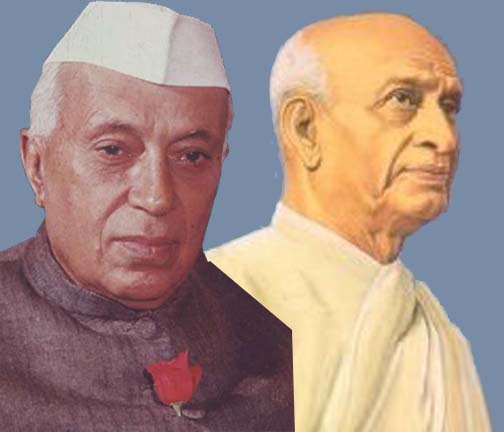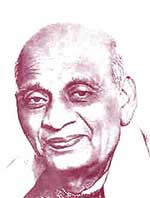
Sardar Vallabhbhai Patel the iron-man of India was born on 31st October, 1875, in a small village in Nadiad. His father Jhaberbhai Patel was a simple farmer and mother Laad Bai was a simple lady. From his childhood itself, Patel was a very hard-working individual. He used to help his father in farming and studied in a school at N. K. High school, Petlad. He passed his high-school examination in 1896. Throughout school he was a very wise and intelligent student. Inspite of poor financial conditions his father decided to send him to college but Vallabhbhai refused. Around three years he stayed at home, worked hard and prepared for the District Leader's examination, hence passing with very good percentage.

Vallabhbhai Patel was a major political and social leader of India and its struggle for independence, and is credited for achieving the political integration of independent India. In India and across the world, he is known as Sardar Vallabhbhai Patel, where Sardar stands for Chief in many languages of India. Patel organized the peasants of Kheda, Borsad, and Bardoli in Gujarat in non-violent civil disobedience against the oppressive policies imposed by the British Raj - becoming one of the most influential leaders in Gujarat. He rose to the leadership of the Indian National Congress and at the forefront of rebellions and political events - organizing the party for elections in 1934 and 1937, and leading Indians into the Quit India movement. He was imprisoned by the British government on numerous occasions, especially from 1931 to 1934, and from 1942 to 1945. Becoming the first Home Minister and Deputy Prime Minister of India, Patel organized relief and rehabilitation efforts in the riot-struck Punjab and Delhi, and led efforts to restore security. Patel took charge of the task to forge a united India from a plethora of semi-independent princely states, colonial provinces and possessions. Patel employed an iron fist in a velvet glove diplomacy - frank political negotiations backed with the option (and the use) of military action to weld a nation that could emancipate its people without the prospect of divisions or civil conflict. His leadership obtained the peaceful and swift integration of all 565 princely states into the Republic of India. Patel's initiatives spread democracy extensively across India, and re-organized the states to help transform India into a modern federal republic. His admirers call him the Iron Man of India. He is also remembered as the "patron saint" of India's civil servants for his defence of them against political attack, and for being one of the earliest and key defenders of property rights and free enterprise in independent India.
On 29 March 1949, a plane carrying Patel and the Maharaja of Patiala lost radio contact, and Patel's life was feared for all over the nation. The plane had made an emergency landing in the desert of Rajasthan upon an engine failure, and Patel and all passengers were safe, and traced by nearby villagers. When Patel returned to Delhi, members of Parliament and thousands of Congressmen gave him a raucous welcome. In Parliament, MPs gave a thunderous ovation to Patel - stopping proceedings for half an hour. Till his last few days, he was constantly at work in Delhi. Patel's health worsened after 2 November 1950, and he was flown to Bombay to recuperate. After suffering a massive heart attack - his second - he died in Bombay on December 15th, 1950. In an unprecedented gesture, more than 1,500 officers of India's civil and police services congregated at Patel's residence in Delhi on the day after his death to mourn him - they pledged "complete loyalty and unremmitting zeal" in India's service. His cremation in Sonapur, Bombay, was attended by large crowds, Nehru, Rajagopalachari, President Prasad and many Congressmen and freedom fighters.

Sardar started his legal practice in Godhra and at the age of 36, he went to England for further studies. He returned to India in 1913 and started his practice in Ahemdabad. He soon became a successful lawyer but his dream and career soon flourished.
Inspired by the work and philosophy of Mahatma Gandhi, he decided to join the freedom struggle. His first attempt was to fight for the cause of peasants in Kheda, Bardoli and other parts of Gujarat who were asked to pay heavy taxes to the British Government. Patel, under the leadership of Gandhi Ji, launched non-violent Civil Disobedience Movement against the payment of raised taxes. The Government tried to suppress the revolt but unfortunately could not do so. Finally, the taxes were suspended and thereafter everyone addressed Patel as Sardar. Further, he was also involved in Salt Satyagraha in Nagpur and Quit India Movement in 1942. He also opposed alcoholism, untouchability, caste discrimination and violence. In 1931, he was elected as the President of Indian National Congress.
After independence he was appointed as the first Home Minister and Deputy Prime Minister of India. He had served the country during the tenure but Gandhi Ji’s death gave him a major heart attack and he died on December 15, 1950.


No comments:
Post a Comment